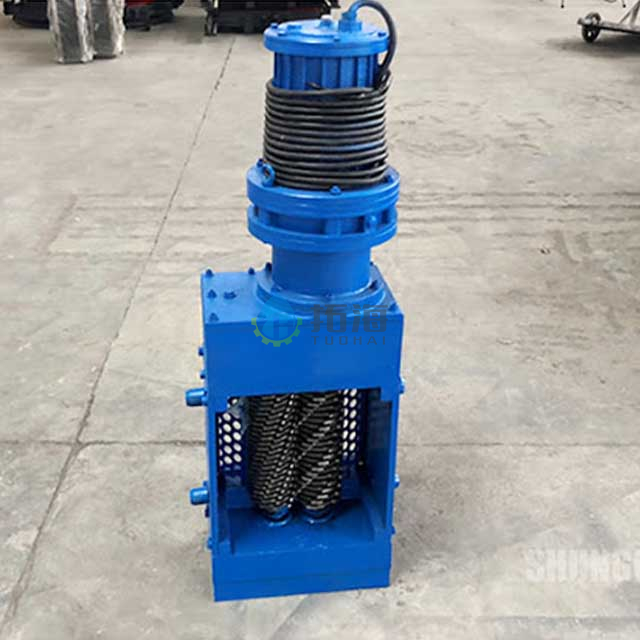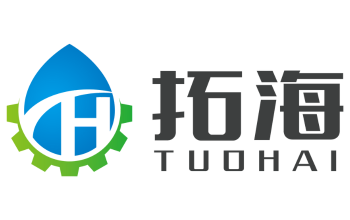| Availability: | |
|---|---|
380V
1.5KW~15KW

The sewage grinder grill is a new type of grid, it pulverizes the solid matter in the sewage into fine particles. After the slag in the sewage is crushed, it does not need to be salvaged and the sewage grinder can also protect the subsequent water pump.
The sewage grinder includes cutting blades, gaskets, shafts, vertical rotary water grids, bearings and seals, bases, casings, reducers, and motors.
The shredder blade of sewage grinders is a two-axis design that operates continuously under dry/wet conditions. The cutting blades and shims are single piece separated.
Two independent cutting blades and shims are mounted on two parallel shafts that alternately overlap to achieve a helical cut. The driven shaft is rotated by the driveshaft to rotate at a speed of 2/3 of the drive shaft.


The sewage grinder grill is a new type of grid, it pulverizes the solid matter in the sewage into fine particles. After the slag in the sewage is crushed, it does not need to be salvaged and the sewage grinder can also protect the subsequent water pump.
The sewage grinder includes cutting blades, gaskets, shafts, vertical rotary water grids, bearings and seals, bases, casings, reducers, and motors.
The shredder blade of sewage grinders is a two-axis design that operates continuously under dry/wet conditions. The cutting blades and shims are single piece separated.
Two independent cutting blades and shims are mounted on two parallel shafts that alternately overlap to achieve a helical cut. The driven shaft is rotated by the driveshaft to rotate at a speed of 2/3 of the drive shaft.

Model | Height of Blade (mm) | Height of Housing | Total Height | Width of Housing (mm) | Length of Housing | Total Length (mm) | Flow | Power |
| W200 | 200 | 560 | 1070 | 280 | 400 | 475 | 76 | 2.2kw |
| W300 | 300 | 660 | 1170 | 280 | 400 | 475 | 111 | 2.2kw |
| W400 | 400 | 760 | 1270 | 280 | 400 | 475 | 150 | 3kw |
| W500 | 500 | 860 | 1370 | 280 | 400 | 475 | 180 | 3kw |
| W600 | 600 | 960 | 1470 | 280 | 400 | 475 | 220 | 3kw |
| W700 | 700 | 1060 | 1570 | 280 | 400 | 475 | 280 | 4kw |
| W800 | 800 | 1160 | 1670 | 280 | 400 | 475 | 330 | 4kw |
| W900 | 900 | 1260 | 1770 | 280 | 400 | 475 | 400 | 4kw |
| W1000 | 1000 | 1360 | 1870 | 280 | 400 | 475 | 450 | 4kw |
Model | Height of Blade (mm) | Height of Housing | Total Height | Width of Housing (mm) | Length of Housing | Total Length (mm) | Flow | Power |
| W200 | 200 | 560 | 1070 | 280 | 400 | 475 | 76 | 2.2kw |
| W300 | 300 | 660 | 1170 | 280 | 400 | 475 | 111 | 2.2kw |
| W400 | 400 | 760 | 1270 | 280 | 400 | 475 | 150 | 3kw |
| W500 | 500 | 860 | 1370 | 280 | 400 | 475 | 180 | 3kw |
| W600 | 600 | 960 | 1470 | 280 | 400 | 475 | 220 | 3kw |
| W700 | 700 | 1060 | 1570 | 280 | 400 | 475 | 280 | 4kw |
| W800 | 800 | 1160 | 1670 | 280 | 400 | 475 | 330 | 4kw |
| W900 | 900 | 1260 | 1770 | 280 | 400 | 475 | 400 | 4kw |
| W1000 | 1000 | 1360 | 1870 | 280 | 400 | 475 | 450 | 4kw |
Sewage grinders with no screen drum are a type of wastewater treatment equipment that are designed to grind and shred solid waste materials in sewage, wastewater, or sludge. These grinders are equipped with powerful cutting blades that are capable of breaking down a wide range of solids, including rocks, plastics, metal, and other debris that may be present in the wastewater stream.

Some of the key features and advantages of sewage grinders with no screen drum include:
High performance:
These grinders are designed to deliver high performance and efficiency in the treatment of wastewater. They can grind up large volumes of solid waste in a short amount of time, making them ideal for use in large-scale wastewater treatment facilities.
Low maintenance:
Sewage grinders with no screen drum require minimal maintenance since they do not have a screen drum that needs to be cleaned or replaced. This makes them a cost-effective option for wastewater treatment facilities that want to reduce their maintenance costs.
Versatility:
These grinders can handle a wide range of materials, including solids of different sizes, shapes, and densities. They are also capable of handling tough and abrasive materials that would normally cause problems with other types of wastewater treatment equipment.
Reduced clogging:
The absence of a screen drum in these grinders means that there is less chance of clogging, which can lead to downtime and maintenance issues. This also means that there is less need for manual cleaning of the screen drum, which can be a time-consuming and unpleasant task.
Reduced energy consumption:
Sewage grinders with no screen drum typically use less energy than other types of wastewater treatment equipment. This can help reduce energy costs and improve the overall sustainability of the wastewater treatment process.
Overall, sewage grinders with no screen drum offer a range of benefits to wastewater treatment facilities, including high performance, low maintenance, versatility, reduced clogging, and reduced energy consumption. These grinders are an excellent choice for facilities that want to improve their wastewater treatment process and reduce their operating costs.
Sewage grinders with no screen drum are a type of wastewater treatment equipment that are designed to grind and shred solid waste materials in sewage, wastewater, or sludge. These grinders are equipped with powerful cutting blades that are capable of breaking down a wide range of solids, including rocks, plastics, metal, and other debris that may be present in the wastewater stream.

Some of the key features and advantages of sewage grinders with no screen drum include:
High performance:
These grinders are designed to deliver high performance and efficiency in the treatment of wastewater. They can grind up large volumes of solid waste in a short amount of time, making them ideal for use in large-scale wastewater treatment facilities.
Low maintenance:
Sewage grinders with no screen drum require minimal maintenance since they do not have a screen drum that needs to be cleaned or replaced. This makes them a cost-effective option for wastewater treatment facilities that want to reduce their maintenance costs.
Versatility:
These grinders can handle a wide range of materials, including solids of different sizes, shapes, and densities. They are also capable of handling tough and abrasive materials that would normally cause problems with other types of wastewater treatment equipment.
Reduced clogging:
The absence of a screen drum in these grinders means that there is less chance of clogging, which can lead to downtime and maintenance issues. This also means that there is less need for manual cleaning of the screen drum, which can be a time-consuming and unpleasant task.
Reduced energy consumption:
Sewage grinders with no screen drum typically use less energy than other types of wastewater treatment equipment. This can help reduce energy costs and improve the overall sustainability of the wastewater treatment process.
Overall, sewage grinders with no screen drum offer a range of benefits to wastewater treatment facilities, including high performance, low maintenance, versatility, reduced clogging, and reduced energy consumption. These grinders are an excellent choice for facilities that want to improve their wastewater treatment process and reduce their operating costs.
